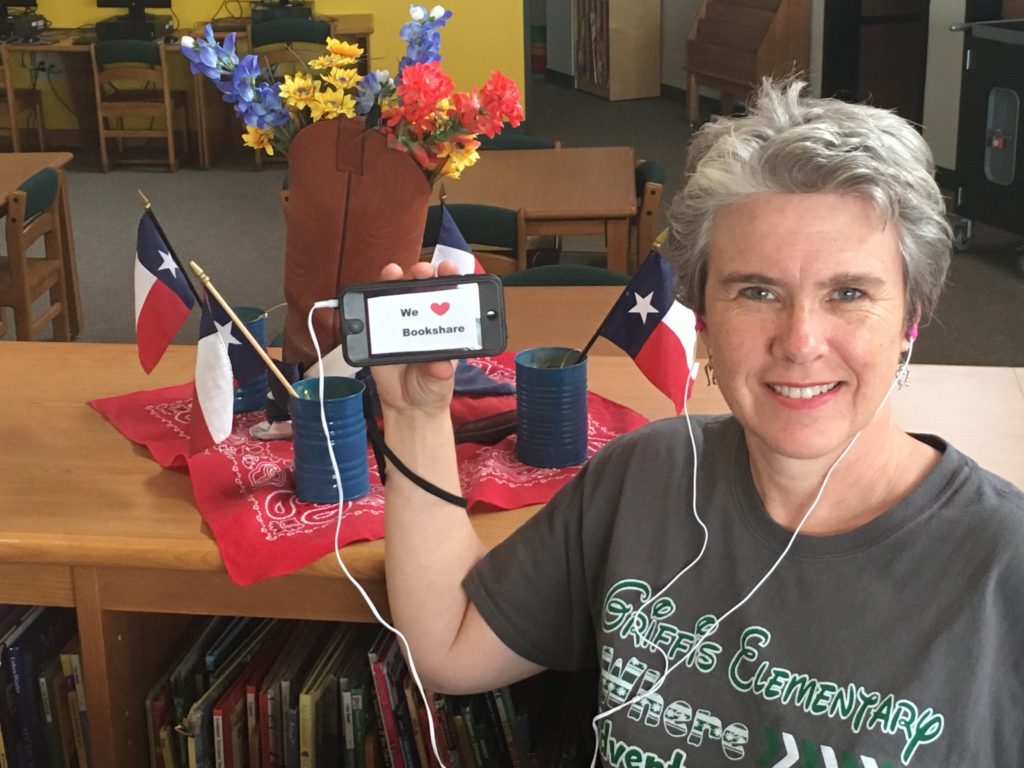 Finding the right reading solutions for an estimated 2.4 million* American students with a learning disability, like dyslexia, can be difficult. For these students, reading isn’t easy. Brain signals get mixed up, causing an inability to decode and interpret words. Thankfully, many students with learning disabilities are placed in the capable hands of specialists like Leslie Patterson, a Certified Academic Language Therapist and licensed Dyslexia Teacher for Griffis Elementary School in Caddo Mills, Texas. Leslie works with young children, and a critical part of her job is to identify strategies and resources that strengthen their reading comprehension through a multisensory approach.
Finding the right reading solutions for an estimated 2.4 million* American students with a learning disability, like dyslexia, can be difficult. For these students, reading isn’t easy. Brain signals get mixed up, causing an inability to decode and interpret words. Thankfully, many students with learning disabilities are placed in the capable hands of specialists like Leslie Patterson, a Certified Academic Language Therapist and licensed Dyslexia Teacher for Griffis Elementary School in Caddo Mills, Texas. Leslie works with young children, and a critical part of her job is to identify strategies and resources that strengthen their reading comprehension through a multisensory approach.
Discovering Assistive Technology to Hear Content Read Aloud
Several years ago, Leslie experienced an “aha” moment that forever changed the way she taught reading using assistive technology and accessible curriculum materials. “I was working with a first grader who had a lot of exposure to reading but could not easily retain word patterns,” she said.
Leslie and many other teachers tried different strategies, but none were effective. In fourth grade, the student was still reading poorly, so the specialist took a new approach. She sat him at a computer running Read & Write Gold by TextHelp. The software reads text aloud and highlights words as the reader listens and follows along. With headphones on, the student was immersed in reading. “It was like a light went on,” says Leslie. “He showed immediate improvement. He began to complete all his assignments with the help of the Read & Write Gold text-to-speech features.”
Soon after his introduction to technology, Leslie signed him up for a Bookshare membership where he could read digital accessible books with both his eyes and his ears. Rather than reading print books that were several grade levels below his cognitive ability, this student was now passing Accelerated Reading (AR) scores on grade-level library books. The student went on to complete all of his school assignments using assistive technology and accessible curriculum. The multisensory reading approach (listening to and seeing highlighted text) enabled him to comprehend more of what he read. He met his academic goals. He enjoyed going to the school library and to find and read digital books. Leslie knew that she had made a breakthrough with her student.
Since that early technology reading experience, Leslie has turned to Bookshare’s online accessible library to find a broader selection of accessible ebooks. She says, “The digital library makes a real difference in helping students read grade-level text. Membership is free for all qualified U.S. students and includes some free reading tools. I can easily find accessible materials for schoolwork and pleasure reading.”
Teaching Students with Dyslexia to Become Mindful Readers
To keep her students engaged in reading, Leslie teaches them strategies of how to “listen well” with their eyes and ears. She says this is a key learning strategy called mindful reading. “Reading ebooks is like watching a movie,” she says. “If students learn to practice mindful reading strategies, they can become fully immersed in their ebooks. This experience can increase their comprehension and help them become independent readers. It opens them up to new learning opportunities and to expect academic achievement.”
Leslie suggests these mindful reading practices that she has adopted over time:
- Focus and discipline – teach students how to intentionally engage their senses, particularly eyes and ears, while reading (seeing and hearing) a digital ebook.
- Thought patterns – discuss brain functions to alert the thinking process.
- Story elements – break down the story into smaller parts to understand main points.
- Memory and recall – understand how the brain retains and recalls information.
- Imagination and creativity – determine how to imagine images, charts and symbols.
- Characters – imagine people and scenes in the mind, like in a movie.
- Brainstorm – prepare students to ask questions likely to be on comprehension quizzes.
- Technology devices – review how to use devices and set preferences and bookmarks.
Each school day, Leslie Patterson enters her classroom and sees tablets on her desk with lots of sticky notes from students requesting ebooks from Bookshare. She says, “Bookshare is a wise investment of time for our schools, teachers, and families. The library holds a rich and diverse collection (482,174 titles to date) with over 350,000 educational titles including literature and K-12 textbooks in accessible formats. With mindful reading best practices, assistive technology, and ebooks, we can help many more students with learning and print disabilities enjoy success in school and in life, and teaching children how to read and listen well will make you a hero.”
*Source: National Center for Learning Disabilities
Leslie Patterson was featured in the Dallas Morning News in an article titled, “Elementary teacher uses technology to help dyslexic students develop love of reading.”

Be First to Comment